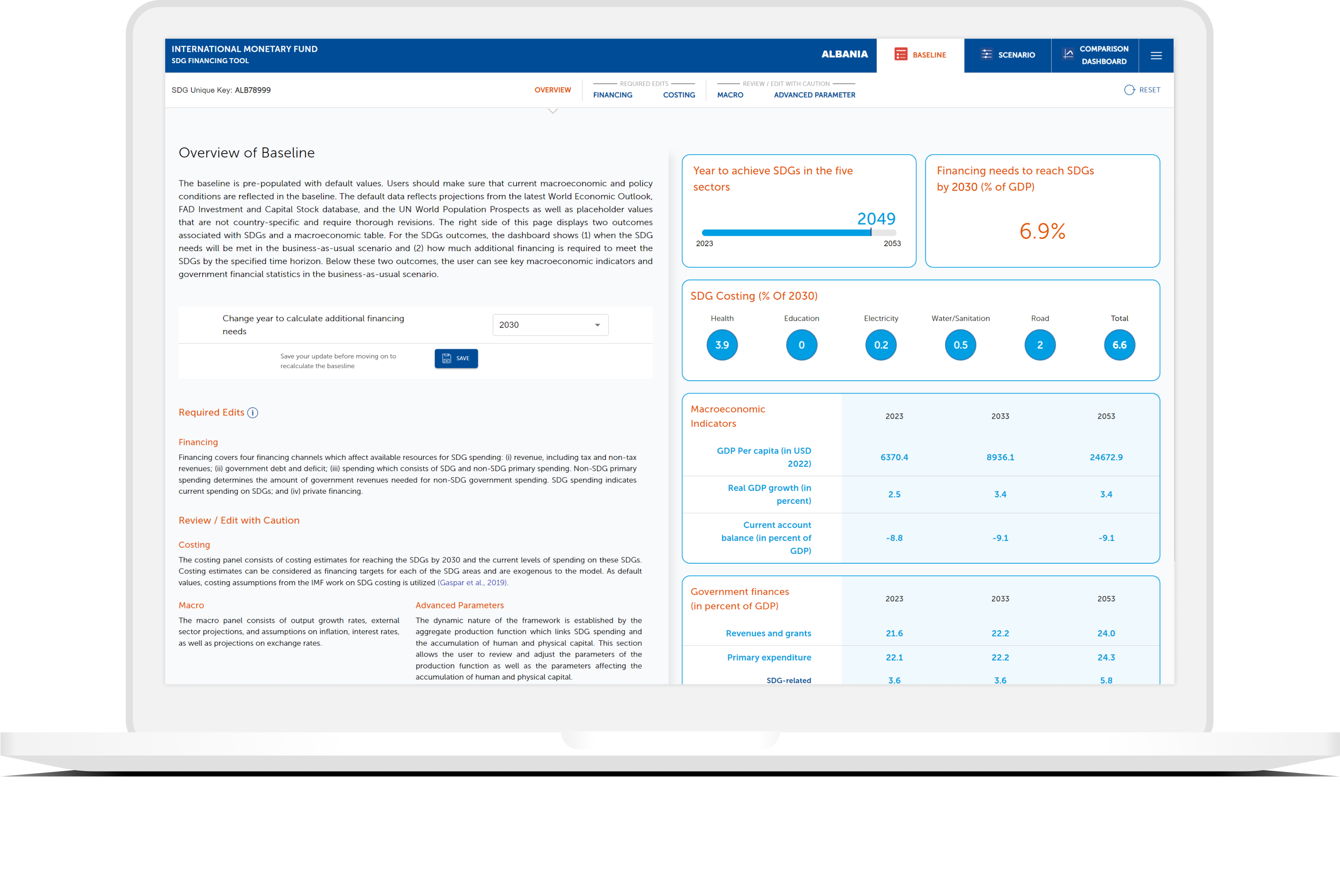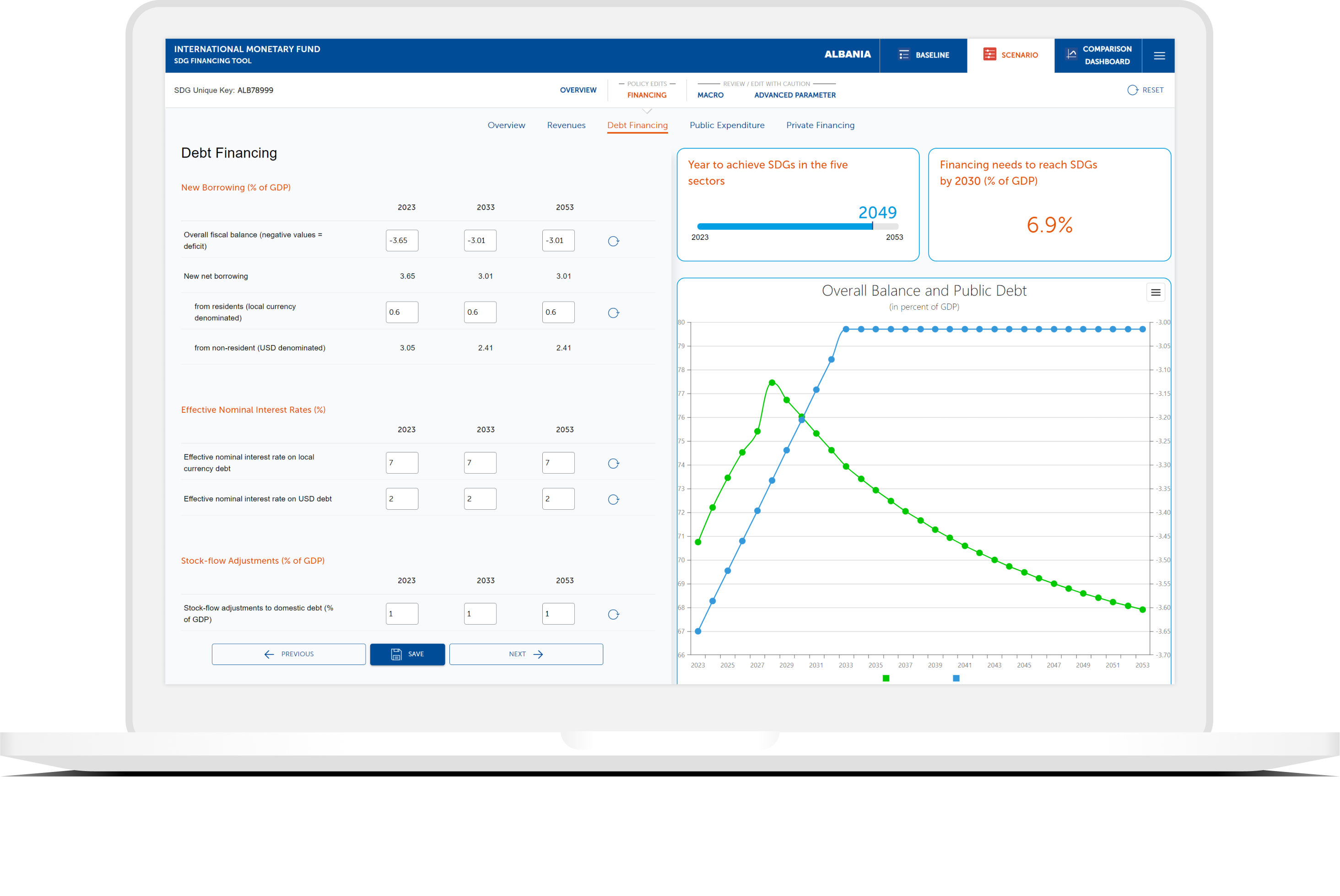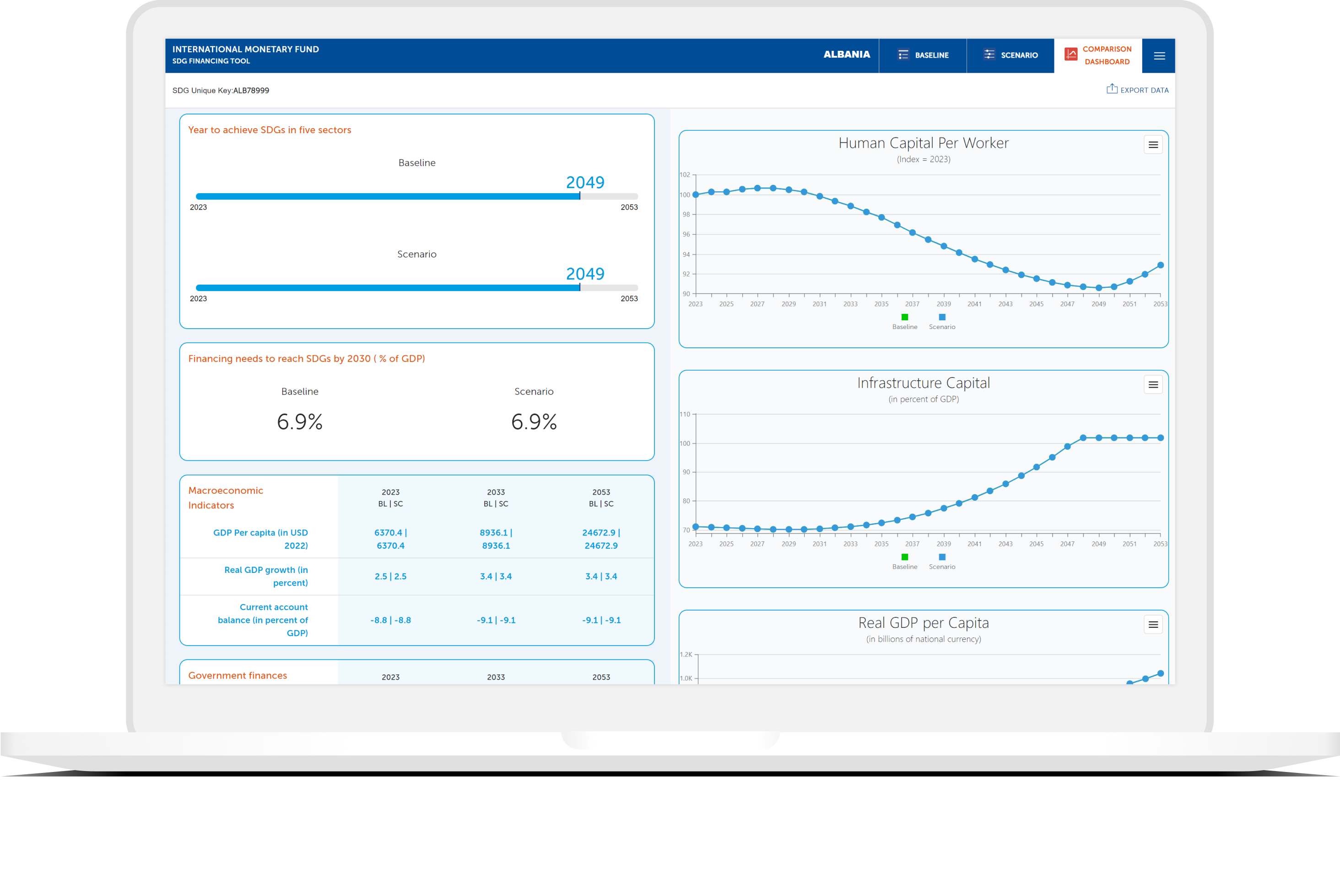User Guide
The SDG Financing tool (“SDGFiT”) is a framework to evaluate financing needs to achieve SDGs in a macroeconomic consistent and dynamic setting. The tool allows for the monitoring of the performance of achieving the SDGs and assesses additional financing options.
The tool consists of a set of accounting identities in the real, fiscal, and external sectors which ensure macroeconomic consistency. In addition, a Cobb-Douglas production function assures that spending on human and physical capital is consistent with output growth.










